I'm trying to understand the workings of the following circuit that I've both emulated and built physically so I know it does work (I did it in a different simulator, but I've redrawn it here for your convenience - animated gifs from the simulator will follow):
simulate this circuit – Schematic created using CircuitLab
I understand the way NPN and PNP transistor work there with the 10uF capacitor C1 draining the current away from the base of the NPN transistor until the capacitor charges, upon which the current is applied to the NPN transistor base and it allows electricity to flow through it, which in turn "opens" the PNP transistor.
What I fail to understand is what happens with the capacitor and resistor under the emitter of the NPN transistor - the current seems to drawn upwards through the 100 uF capacitor C2. The capacitor is charged through the emitter at the beginning of the simulation, so it's indeed blocking the current from going downwards from the NPN emitter, but why would it take up the current the opposite way?
This gets even more mysterious if I replace it with a diode that goes the same way - it should have almost 0 resistance so if the current was drawn upwards through the capacitor, it should also be drawn through the diode.
Specifically, what I see in the simulator:
Now if I replace it with a diode it doesn't flow upwards at all, and I'd expect this to happen if an inversely charged capacitor causes it:
And if I replace it with another resistor it obviously flows downwards as expected through it:
Can you explain to me what is exactly happening here?
Here is the link to this circuit made in the original circuit simulator I've been using:
Circuit in the original online simulator
ADDITION: Indeed I see now on the circuit simulation reworked by Tony Stewart EE75 that the capacitor does get in fact discharged and then charged again.
One thing that still somewhat puzzles me - on the simulator it still shows that the current is flowing from a lower voltage (grey) to higher voltage (green) through the capacitor, which is normally not the case - even next to it we see the current flowing from high (green) voltage to low (grey). Is this a glitch of the simulator rendering the colours or something? Here's what I'm referring to (animated GIF from Tony Stewart EE75's circuit):
